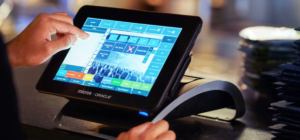Introduction to How To Create an NFT
How to make and sell an NFT is something many artists and designers are wondering right now due to the incredible prices that some pieces of NFT art have fetched at auction. Non-fungible tokens are the latest trend to hit the art market, and they’ve hit it big, with even Christie’s holding NFT art auctions involving astronomical sums of money.
Opinion is divided on whether cryto-art is a passing fad or a tendency that’s here to stay, but you might well be asking whether it’s time to take notice and explore how to make an NFT, and how to sell an NFT, of your own work. If that’s the case, you’re in the right place. This article will walk you through the process from making an NFT of your original artwork to selling an NFT through an online auction.
First up, we should take a little reality check, though. Yes, some NFT art has sold for prices that might seem like sheer lunacy. Beeple’s Everydays – The First 5000 Days still holds the record for now, after fetching $69 million at Christie’s in March 2021 and Beeple’s work continues to sell for incredible prices. His hybrid evolving digital/physical kinetic video Human One (pictured above) sold for $29 million in November. More than a dozen NFTs have fetched over $1m and several dozen more have hundreds of thousands (find more examples in our selection of the best NFT artwork).
What is an NFT?
Listen, there’s no judgment if you’ve arrived here without much understanding of what NFTs are. Maybe a friend said, “Hey, you should sell that picture of your cat as an NFT.” But before you go through the process of creating and selling one, it’s probably best to have some idea about what you’re doing.
We have an entire explainer going into NFTs and the culture around them, as well as an explainer on the blockchain technology that NFTs use. You don’t have to study every word in them, but the rest of this guide will make references to things like Ethereum, proof of work, and other similar concepts that you’ll get a better understanding of by reading our explainers.
Here’s a quick TL;DR, though. NFTs, or non-fungible tokens, are digital tokens stored on the blockchain. Unlike cryptocurrencies, where each coin is the same (there’s no reason to prefer one particular Bitcoin over another), each NFT is unique and can be sold as a way to prove ownership over some sort of digital file.
In almost every case, the files aren’t actually stored on the blockchain itself. Rather, a link to the file is stored, along with the token that acts as proof of ownership over whatever that link points to. There’s also no rule saying that two or more NFTs can’t exist for the same file — you can have NFTs with editions, kind of like trading cards. For example, an NFT can be rare because there are only 10 copies or common because thousands of the same NFT have been “minted,” or written to the blockchain. There’s also nothing to stop someone from taking the file you’ve used for your NFT and creating their own NFT with it (though the blockchain entry will show that it came from their account, not yours).
You can technically sell any digital file as an NFT, but if you’re looking to use a marketplace’s easy minting tools, you’re going to be limited to the formats they support. We’ll touch on that a bit more later, but it’s worth keeping in mind that your first NFT should probably be an image, video, or audio clip of some sort. If you don’t know what you want to sell as an NFT yet, those kinds of restrictions could help you narrow down the possibilities. With that said…
WHAT IS AN NFT? WHAT DOES NFT STAND FOR?
Non-fungible token.
That doesn’t make it any clearer.
Right, sorry. “Non-fungible” more or less means that it’s unique and can’t be replaced with something else. For example, a bitcoin is fungible — trade one for another bitcoin, and you’ll have exactly the same thing. A one-of-a-kind trading card, however, is non-fungible. If you traded it for a different card, you’d have something completely different. You gave up a Squirtle, and got a 1909 T206 Honus Wagner, which StadiumTalk calls “the Mona Lisa of baseball cards.” (I’ll take their word for it.)
How do NFTs work?
At a very high level, most NFTs are part of the Ethereum blockchain. Ethereum is a cryptocurrency, like bitcoin or dogecoin, but its blockchain also supports these NFTs, which store extra information that makes them work differently from, say, an ETH coin. It is worth noting that other blockchains can implement their own versions of NFTs. (Some already have.)
What’s worth picking up at the NFT supermarket?
NFTs can really be anything digital (such as drawings, music, your brain downloaded and turned into an AI), but a lot of the current excitement is around using the tech to sell digital art.
Dogecoin isn’t an NFT. But this GIF of a dogecoin is. GIF: NyanCat on OpenSea
You mean, like, people buying my good tweets?
I don’t think anyone can stop you, but that’s not really what I meant. A lot of the conversation is about NFTs as an evolution of fine art collecting, only with digital art.
(Side note, when coming up with the line “buying my good tweets,” we were trying to think of something so silly that it wouldn’t be a real thing. So of course the founder of Twitter sold one for just under $3 million shortly after we posted the article.)
Do people really think this will become like art collecting?
I’m sure some people really hope so — like whoever paid almost $390,000 for a 50-second video by Grimes or the person who paid $6.6 million for a video by Beeple. Actually, one of Beeple’s pieces was auctioned at Christie’s, the famou—
Yoink! Image: Beeple
Sorry, I was busy right-clicking on that Beeple video and downloading the same file the person paid millions of dollars for.
Wow, rude. But yeah, that’s where it gets a bit awkward. You can copy a digital file as many times as you want, including the art that’s included with an NFT.
But NFTs are designed to give you something that can’t be copied: ownership of the work (though the artist can still retain the copyright and reproduction rights, just like with physical artwork). To put it in terms of physical art collecting: anyone can buy a Monet print. But only one person can own the original.
No shade to Beeple, but the video isn’t really a Monet.
What do you think of the $3,600 Gucci Ghost? Also, you didn’t let me finish earlier. That image that Beeple was auctioning off at Christie’s ended up selling for $69 million, which, by the way, is $15 million more than Monet’s painting Nymphéas sold for in 2014.
This last sold for $3,600, but the current owner is asking for $16,300. GIF by Trevor Andrew
Whoever got that Monet can actually appreciate it as a physical object. With digital art, a copy is literally as good as the original.
Right, so… people have long built communities based on things they own, and now it’s happening with NFTs. One community that’s been exceedingly popular revolves around a collection of NFTs called Pudgy Penguins, but it’s not the only community built up around the tokens. It could be argued that one of the earliest NFT projects, CryptoPunks, has a community around it, and there are other animal-themed projects like the Bored Ape Yacht Club that have their own clique.
Of course, the communal activities depend on the community. For Pudgy Penguin or Bored Ape owners, it seems to involve vibing and sharing memes on Discord, or complimenting each other on their Pudgy Penguin Twitter avatars.
What’s the point of NFTs?
That really depends on whether you’re an artist or a buyer.
I’m an artist.
First off: I’m proud of you. Way to go. You might be interested in NFTs because it gives you a way to sell work that there otherwise might not be much of a market for. If you come up with a really cool digital sticker idea, what are you going to do? Sell it on the iMessage App Store? No way.
Also, NFTs have a feature that you can enable that will pay you a percentage every time the NFT is sold or changes hands, making sure that if your work gets super popular and balloons in value, you’ll see some of that benefit.
I’m a buyer.
One of the obvious benefits of buying art is it lets you financially support artists you like, and that’s true with NFTs (which are way trendier than, like, Telegram stickers). Buying an NFT also usually gets you some basic usage rights, like being able to post the image online or set it as your profile picture. Plus, of course, there are bragging rights that you own the art, with a blockchain entry to back it up.
No, I meant I’m a collector.
Ah, okay, yes. NFTs can work like any other speculative asset, where you buy it and hope that the value of it goes up one day, so you can sell it for a profit. I feel kind of dirty for talking about that, though.
So every NFT is unique?
In the boring, technical sense that every NFT is a unique token on the blockchain. But while it could be like a van Gogh, where there’s only one definitive actual version, it could also be like a trading card, where there’s 50 or hundreds of numbered copies of the same artwork.
Who would pay hundreds of thousands of dollars for what basically amounts to a trading card?
Well, that’s part of what makes NFTs so messy. Some people treat them like they’re the future of fine art collecting (read: as a playground for the mega-rich), and some people treat them like Pokémon cards (where they’re accessible to normal people but also a playground for the mega-rich). Speaking of Pokémon cards, Logan Paul just sold some NFTs relating to a million-dollar box of the—
Please stop. I hate where this is going.
You’ve activated my trap card (which sold for $17,000). Image by Logan Paul
Yeah, he sold NFT video clips, which are just clips from a video you can watch on YouTube anytime you want, for up to $20,000. He also sold NFTs of a Logan Paul Pokémon card.
Linkin Park’s Mike Shinoda (who also sold some NFTs that included a song) actually talked about that. It’s totally a thing someone could do if they were, in his words, “an opportunist crooked jerk.” I’m not saying that Logan Paul is that, just that you should be careful who you buy from.
Are NFTs mainstream now?
It depends on what you mean. If you’re asking if, say, my mom owns one, the answer is no.
The response from my mom when I asked her about owning NFTs.
But we have seen big brands and celebrities like Marvel and Wayne Gretzky launch their own NFTs, which seem to be aimed at more traditional collectors, rather than crypto-enthusiasts. While I don’t think I’d call NFTs “mainstream” in the way that smartphones are mainstream, or Star Wars is mainstream, they do seem to have, at least to some extent, shown some staying power even outside of the cryptosphere.
But what do The Youth think of them?
Ah yes, excellent question. We here at The Verge have an interest in what the next generation is doing, and it certainly does seem like some of them have been experimenting with NFTs. An 18 year-old who goes by the name FEWOCiOUS says that his NFT drops have netted over $17 million — though obviously most haven’t had the same success. The New York Times talked to a few teens in the NFC space, and some said they used NFTs as a way to get used to working on a project with a team, or to just earn some spending money.
Can I buy this article as an NFT?
No, but technically anything digital could be sold as an NFT (including articles from Quartz and The New York Times, provided you have anywhere from $1,800 to $560,000). deadmau5 has sold digital animated stickers. William Shatner has sold Shatner-themed trading cards (one of which was apparently an X-ray of his teeth).
This one I like. Maybe not for $700, but… Image by deadmau5 and Mad Dog Jones
Gross. Actually, could I buy someone’s teeth as an NFT?
There have been some attempts at connecting NFTs to real-world objects, often as a sort of verification method. Nike has patented a method to verify sneakers’ authenticity using an NFT system, which it calls CryptoKicks. But so far, I haven’t found any teeth, no. I’m scared to look.
There are several marketplaces that have popped up around NFTs, which allow people to buy and sell. These include OpenSea, Rarible, and Grimes’ choice, Nifty Gateway, but there are plenty of others.
That depends. Part of the allure of blockchain is that it stores a record of each time a transaction takes place, making it harder to steal and flip than, say, a painting hanging in a museum. That said, cryptocurrencies have been stolen before, so it really would depend on how the NFT is being stored and how much work a potential victim would be willing to put in to get their stuff back.
Note: Please don’t steal.
Should I be worried about digital art being around in 500 years?
Probably. Bit rot is a real thing: image quality deteriorates, file formats can’t be opened anymore, websites go down, people forget the password to their wallets. But physical art in museums is also shockingly fragile.
I want to maximize my blockchain use. Can I buy NFTs with cryptocurrencies?
Yes. Probably. A lot of the marketplaces accept Ethereum. But technically, anyone can sell an NFT, and they could ask for whatever currency they want.
Will trading my Logan Paul NFTs contribute to global warming and melt Greenland?
It’s definitely something to look out for. Since NFTs use the same blockchain technology as some energy-hungry cryptocurrencies, they also end up using a lot of electricity. There are people working on mitigating this issue, but so far, most NFTs are still tied to cryptocurrencies that generate a lot of greenhouse gas emissions. There have been a few cases where artists have decided to not sell NFTs or to cancel future drops after hearing about the effects they could have on climate change. Thankfully, one of my colleagues has really dug into it, so you can read this piece to get a fuller picture.
Can I build an underground art cave / bunker to store my NFTs?
Well, like cryptocurrencies, NFTs are stored in digital wallets (though it is worth noting that the wallet does specifically have to be NFT-compatible). You could always put the wallet on a computer in an underground bunker, though.
What if I wanted to watch a TV show that’s somehow related to NFTs?
Believe it or not, you have options! Steve Aoki is working on a show based on a character from a previous NFT drop, called Dominion X. The show’s site says that it’ll be an episodic series launched on the blockchain (the first short video is on OpenSea), and there are hundreds of NFTs already associated with the show.
There’s also a show called Stoner Cats (yes, it’s about cats that get high, and yes it stars Mila Kunis, Chris Rock, and Jane Fonda), which uses NFTs as a sort of ticket system. Currently, there’s only one episode available, but a Stoner Cat NFT (which, of course, is called a TOKEn) is required to watch it.
01. Buy some cryptocurrency

The first thing to be aware of is that all of the NFT auction platforms mentioned above will want paying upfront to ‘mint’ your NFT, turning your artwork into a non-fungible token that you can then sell. Generally, they want paying in cryptocurrency, so before you have the chance to earn some cryptocurrency, you’ll need to buy some to cover the fees. Most platforms charge their fees in Ether (abbreviated as ETH), the native cryptocurrency of the open-source blockchain platform Ethereum, which is where NFTs first launched.
If you already own some ETH you’ll need to make sure you have it in a digital wallet, which you’ll need to connect to your chosen NFT platform to be able to make (and receive) payments. If need to buy some, there are many cryptocurrency exchanges to do that, but the quickest and easiest option is usually to buy ETH directly with your digital wallet of choice.
As we mentioned, there are many options for this, but to illustrate the process, we’ll use MetaMask, which is available as a browser extension and as a mobile app. If you’d rather use another service, or if you’re familiar with digital wallets and already have one, jump straight to step 4, otherwise we’ll talk you though how to set up your wallet and buy ETH in the next step.
02. Create a digital wallet to pay for your NFT
To create a digital wallet with MetaMask, you’ll need to go to its website and click on the blue ‘Download’ button in the top-right. As we’re using a desktop computer, we’ll choose the option to install the browser extension, but there’s also a mobile app.

You’ll be asked to confirm that you wish to ‘create a new wallet and seed phrase’. Don’t worry too much about what ‘seed phrase’ means (it’s basically a list of words that stores blockchain information). Say yes, then it’s simply a matter of agreeing to the terms, creating a password, and making your way through some security measures, then you’ll have your account set up.
03. Add some cryptocurrency to your wallet

Once you’ve set up your MetaMask wallet, or any digital wallet, you’ll need to add some ETH to it. If you don’t already own some ETH, you’ll need to buy some now, so click on the ‘Buy’ button and select the option ‘Buy ETH with Wyre’. You’ll be taken to a screen where you can use either Apple Pay or a debit card to buy ETH. Note that if you’d rather not part with any money yet, you can leave this stage until later; it just requires a little more faff (you’ll want to check your chosen NFT platform’s fees to know how much you’ll need to buy).
The jargon involved in the cryptocurrency world can make it quite daunting, but buying currency is actually very easy to do. Just be aware that like bitcoin and many other cryptocurrencies, the value of Ether can fluctuate hugely. In 2021 alone, the price of 1 ETH has gone from under $1,000 to around $4,700 at the time of writing, with many peaks and troughs on the way. It’s perfectly possible for the price of the currency to swing by several hundreds of US dollars in just a few hours.
04. Connect your wallet to an NFT platform
Most digital wallets work in a similar way. Whichever one you’ve chosen, you’ll need to connect it to the NFT platform that you’ll use to create your NFT. For illustrative purposes, we’re using Rarible, but there are many other NFT platforms to choose from and the process will generally be similar to what we outline below.

Go to Rarible.com (shown above). In the right-hand corner of the screen, there’s a button that reads ‘Connect wallet’. Click there, and on the next screen, you’ll be asked for your wallet provider, which is our case is MetaMask. A popup will give you the option to connect your wallet with Rarible. Click ‘Next’, then ‘Connect’, accept the terms of service and confirm you’re over 13 years old.
05. Upload the file you want to turn into an NFT

So now you have a wallet connected with ETH to make payment, you’re ready to create an NFT of your work. On the Rarible site, click the blue ‘Create’ button at the top right. You’ll then be given options to create a single, one-off work, or to sell the same item multiple times. In this example, we’ll opt for ‘Single’. Now you need to upload the digital file that you want to make into an NFT. Rarible accepts PNG, GIF, WEBP, MP4 and MP3 files, up to 30MB in size.

To illustrate, we’ve created an ironically awful piece of art, inspired by David Hockney’s controversial London Underground art. Upload your (hopefully much better) digital file, and on the right, you’ll see a preview of what your NFT post will look like.
06. Set up an auction for your NFT

In the next part of the form, you’ll need to choose how to sell your NFT artwork. There are three options. ‘Fixed price’ allows you to set a price and sell your NFT instantly (rather like the ‘Buy it now’ option on eBay). The ‘Unlimited Auction’ option will allow people to carry on making bids until you accept one. Finally, ‘Timed auction’ is an auction that only lasts for a set time. That’s the option we’ll choose as an example.
This leads us to the trickiest part: choosing a minimum price. Sell your NFT too cheaply and the enormous fees will swallow up your profit, possibly even leaving out of pocket. We’ll set our price at an ambitious 1 ETH (currently US$4,700) and give people seven days to make bids.
Next, you get an option to ‘Unlock once purchased’. This gives you the chance to provide your eventual buyer with a full, high resolution version of your art, and/or additional material through a secret web page or download link. Below that is the most confusing option, titled ‘Choose Collection’. This is a very technical question about how the blockchain is set up. The default option here is ‘Rarible’, and we’d advise leaving it like that.
07. Add a description to sell your NFT

Now you can add a title and description for your listing. To maximise the chance that your NFT will sell, you should take some time to think about this. You’re then asked to consider what percentage of royalties you wish to claim on any resale of your art in the future.
Again, this is a balancing act, as a higher percentage will net you more money per sale in the long run, but it will also deter people from reselling your art in the first place as they’ll be less likely to make a profit for themselves. Finally, there’s an optional field to add your file’s properties. With that complete, you’re almost done.
08. Pay the listing fee to sell your NFT (but be warned!)

Click ‘Create Item’, and you’ll be invited to connect with your wallet to pay the listing fee. If you don’t have sufficient funds in your wallet, don’t worry: you won’t have to start again. Just click on the wallet icon in the top-right corner of the screen, and you’ll be given the option to add funds directly within Rarible.
Before doing so, just a final word of warning. The listing fee may seem low: in our case it worked out at just $5.91 in US dollars. But this is only the start. Before you can go further, you’ll have to agree to a further fee to actually generate your NFT, which in our case would have been the equivalent of $42.99 in ETH. If someone actually buys your NFT, you’ll have to pay a commission fee on the NFT sale, plus a transaction fee for transfer of the money from the buyer’s wallet to your own. In our opinion, none of this was hugely clear on Rarible’s website at the time we tried it.
We’d love to be able to explain, clearly and simply, how to calculate the potential cost of creating and selling an NFT, but the confusing nature of blockchain technology, the wild fluctuations in cryptocurrency values and the lack of transparency on the platforms themselves make that an impossible task. Really, you’re left having to take the risk and wait and see how much you get charged overall if you make a sale, and to hope that you still come out with a profit.
If you do fancy taking a punt and throwing some money into making NFT art, though, we wish you the best of luck. We’d love to hear about how you get on via Twitter at @creativebloq or Instagram at @creativebloqofficial.







